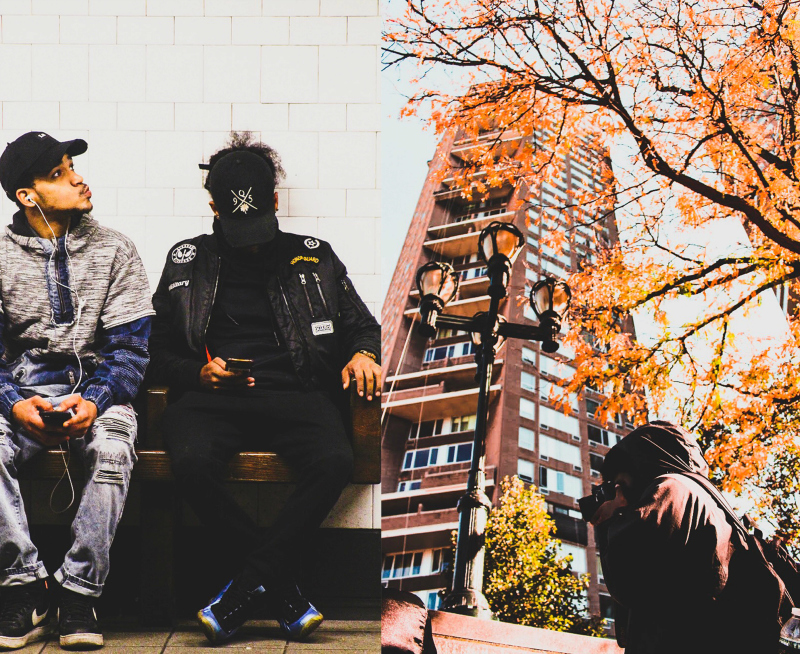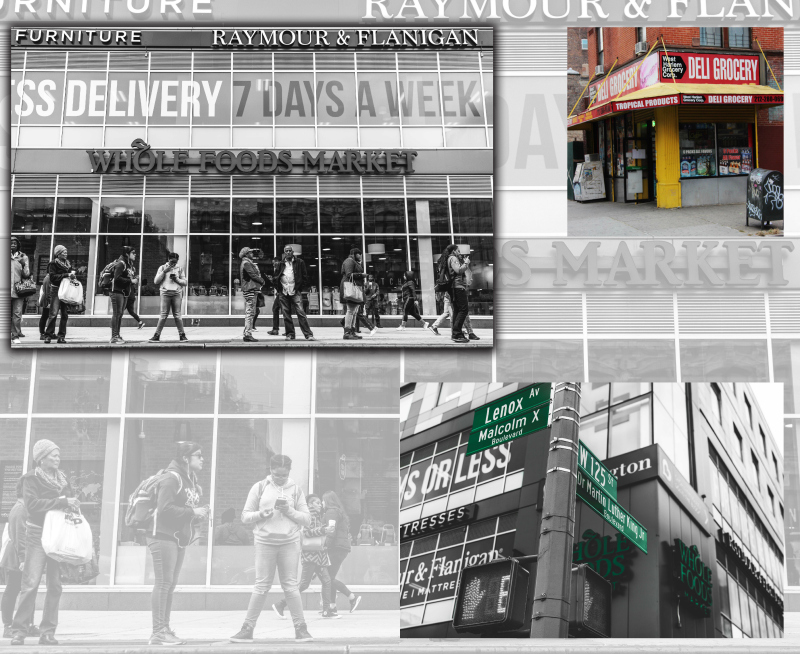
Students paid homage to James Van Der Zee, whose work presented Harlem as a deep residential and creative home to legions of black individuals, families, traditions, businesses and institutions of excellence.
Editor’s note: “Reimagining James Van Der Zee,” an exhibit based on the “Harlem Reimagined” project described below, opens with a reception 4-6 p.m. Feb. 8 at the Dr. Martin Luther King, Jr. Library.
By David E. Early, Hearst Visiting Journalism Professor in Residence
One hundred years ago, James Van Der Zee, the famed cultural photographer, launched his Harlem-based business that focused on portraits, lifestyle, art, music, intellectual pursuits and numerous efforts at achieving racial equality for black folks.
Now, a century later, a team of photojournalism students from San Jose State University, led by Associate Professor Duane Michael Cheers, returned to New York on a project entitled, “Harlem Reimagined.” Their task was to take an intense, visual inspection of the community today, as it deals with a wave of gentrification that threatens to diminish or remove Harlem as the nation’s black, cultural mecca.
In a four-day, on-the-ground, academic attack, the SJSU photo-rangers took a team of 10 to New York. That group became part of a roving army of 45 educators, reporters, guides, high school students, activists and Harlem locals — many of whom, with hungry cameras in tow — captured thousands of defining images.
Back when Van Der Zee was working, the prolific African-American shooter produced an enormous collection that beautifully captured all factions of Harlem life before, during and after the Harlem Renaissance. The photographer’s work, famously featured in a 1969 show at the Metropolitan Museum of Modern Art, presented Harlem as a deep residential and creative home to legions of black individuals, families, traditions, businesses and institutions of excellence.
Today?
Harlem remains a busy and soulful, African-American village, but one that is absorbing an unsettling wave of gentrification. Left unchecked, the movement threatens to wipe out long-term residents, along with the schools, churches, businesses, neighborhoods, entertainment venues and social justice organizations that have defined African-American achievement for decades.
Surging real estate values have already shoved aside thousands of poor and middle-income blacks by building and refurbishing numerous living spaces into ultra-expensive domiciles. The great fear in Harlem is that gentrification might deliver on an oft-heard, cold declaration: “Those who can pay, can stay.”
The SJSU photo project hopes to capture the struggle against financial and racial forces that threaten to transform Harlem into something unrecognizable to the very people who have nourished it for decades.
The energetic shooters searched the streets, morning-til-night, looking for the shimmer and the shame, the pride and the poverty, the love and the loathing that happens when widespread change shoves a beloved community into an unknown realm.
Students photographed everything from the famed Apollo Theater to the Studio Museum of Harlem. From parks bearing statues of Harriet Tubman and Duke Ellington, to the colorful frenzy of the Malcolm Shabazz Harlem Market, stuffed with genuine, African goods.
They patrolled and shot life on streets named after black luminaries — Frederick Douglass, Adam Clayton Powell and Martin Luther King Jr. — and challenged people, black and white, to discuss the unlikely conundrum: the possible dismantling of the most precious, black community in America.
Into the lenses of their roving cameras, shooters also caught The Shrine urban beats nightclub, The Graffiti Wall of Fame, Sylvia’s upscale soul restaurant and prominent academies named after Chief Justice Thurgood Marshall, author James Baldwin and educator Mary McLeod Bethune.
Up on Harlem’s Sugarhill, they shot a restaurant where comedian Redd Foxx and Malcolm X worked the kitchen together and a single apartment building where Supreme Court Justice Marshall, W.E.B. DuBois and Walter White once lived. Imagine, civil rights giants of the law, education and racial justice in a single structure along with another tenant Maestro Ellington, The Duke.
Students also explored unique and highly personal establishments: Sister’s Uptown Bookstore and Cultural Center, owned and operated by the inspirational Janifer Wilson, a retired physician at Bronx Lebanon Hospital who worked in the department of surgery. Today, she despairs that hers is the only black-owned bookstore in Manhattan.
Another store, Hats By Bunn, turned out to be a slim, miraculous emporium where one man crafts supple, sharp and colorful head wear by hand on an ancient machine. His store is also an easy-going, drop-in center for friends, and the curious and loving customers the world over.
“I make people look good and feel good,” says Bunn, whose creativity feeds off the music filling his shop six days a week. “My designs come from the rhythms of the moment.”

The team of visual cultural excavators even looked at the fresh crop of unlikely new businesses, including Whole Foods.
The team of visual cultural excavators even looked at the fresh crop of unlikely new businesses: Whole Foods to Starbucks, CVS to Buffalo Wild Wings. They even absorbed the images out of a burger-and-fries eatery called Harlem Shake, whose owners confessed how they tried to honor the community by reproducing a funky, “Harlem vibe,” from back in the day.
In the end, the visual exploration of Harlem at this critical, life-altering moment in the community’s history, will become a riveting, educational document that will speak intelligently and from the heart in the service of cultural history, for decades to come.


